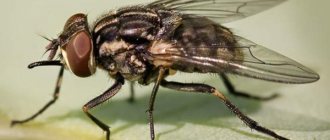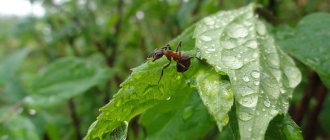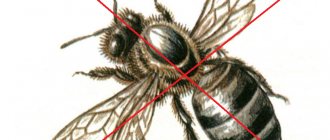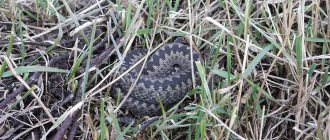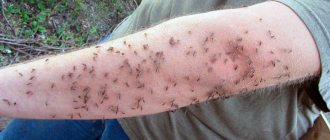Did you know that snails have 14,175 teeth, with which they quickly grind everything edible in the ground that comes their way?
Therefore, it is not at all surprising that a large number of gardeners, as well as gardeners, are in search of answers to the question of how to properly deal with snails in their local area.
You need to know that it is very difficult to fight an invasion of snails; it can most easily be prevented by carrying out preventive measures against these creatures from time to time.
In addition, cute favorites of small children, snails are carriers of tapeworms as well as roundworms.
- 2 Ways to control snails in the garden
- 3 What methods can you use to fight snails in the garden?
- 4 Fighting grape snails
- 5 Natural Ways to Control Snails
- 6 New and chemical means of snail control
- 7 Fighting snails or slugs using folk remedies (Video)
What can snails destroy?
Snails often crawl out to “hunt” at night or in bad cloudy weather after rain. During the day, they like to camouflage themselves in secluded places where it is very humid and too dark. You can find out that you have snails by the irregularly shaped holes that the mollusks gnaw out in the succulent leaves of various plants.
They don't like the stem and large veins at all. Another correct sign of the appearance of snails in your local area is heaps of feces, as well as traces of mucus. These signs may mean it's time to get serious about snail control in your garden.
The fight against snails is carried out using different methods: mechanical, environmental, chemical, and also folk methods.
Lifestyle of snails and slugs
Laying of slug eggs under a cabbage leaf
All land mollusks are hermaphrodites and have reproductive organs of both sexes, so they can produce both sperm and eggs. Therefore, each individual has the potential to reproduce. They can lay eggs up to 6 times a year. The maturation process lasts about 2 years for snails, and slugs reach maturity in about 3-6 months (depending on the species).
In areas with mild winters, such as southern coastal areas, these clams can be active all year round. When it's cold, they hibernate shallow below the surface of the earth. When it’s hot, there’s drought, slugs burrow deeper, and snails fence themselves off from the outside world with a parchment membrane to protect themselves from drying out, most often attaching themselves to tree trunks, fences, or walls. During this period, they live off stored fat and can remain without food for about three months. This ability is one of the many reasons why they have been able to survive through millions of years of evolution.
In wet spring, rainy summer, and autumn, slugs and snails really annoy us, eating strawberries, cabbage leaves, and other garden crops. The strawberry bends slightly to the ground, and you look - in the morning half of the berry has been bitten, spoiled, and the leaves of cabbage or beets sparkle with large holes, eaten by these animals with the help of a horny arched jaw - a grater. They spoil seedlings, young shoots of many vegetable crops, fruits of cucumbers, tomatoes, tubers, and potato foliage. They cause significant damage to winter wheat by eating sown grains and young shoots. Small holes are left on the leaves and fruits of vegetables, and young slugs, having hatched in the upper layers of the soil, gnaw holes of various sizes on potato tubers.
Slug (or slug) is the commonly used name for a number of gastropod mollusks that, in the course of evolutionary development, have undergone the loss of their shell. They develop, grow quite quickly, and can reach the adult stage in a matter of months if environmental conditions are favorable for this. Some varieties produce offspring twice a year - in spring and autumn. Garden areas are usually favored by field and netted slugs.
Slugs are thick, oily, slippery creatures that have no limbs but two sets of tentacles at the front of their body. They do not have a shell, so they are called naked mollusks. The absence of a shell allows slugs to live in the soil, spend more time underground, there they also find food for themselves: potatoes, carrots, beets, and we lose part of the harvest.
Slugs in storage facilities contaminate vegetables, leaving traces of congealed mucus, soil, and fecal residues, which contributes to the rotting of the crop and shortens its shelf life. And by crawling on different plants, snails and slugs spread various diseases.
With the onset of autumn coolness, slugs penetrate into the country house, leaving behind long silvery stripes - dried mucus. Admit it: it’s unpleasant when you accidentally step with your bare foot on a wet, cold, slippery slug or suddenly hear the unpleasant crunch of an accidentally crushed snail.
The long, moist, soft, slippery body of the snail is protected by a hard shell, where it hides when disturbed. Its typical shell is cone-shaped and twisted into a spiral. They, just like slugs, belong to the class of invertebrates (animals that do not have a backbone), they can live under any conditions - in the sea, fresh water, on land in humid conditions. Both have two pairs of tentacles on the head with organs of smell and touch. One pair of tentacles is longer than the other and looks like horns. These “horns” are eyes that are located at the tips of a long pair of tentacles. A short pair of tentacles is used for smell. Tentacles are very important to them. They don't have ears, but their amazing sense of smell helps them find food.
After the rain
These mollusks are less active during cold or, conversely, hot, dry months. On humid days they can most often be found under cabbage leaves, under boards, and stones. There they hide during the day, and in the evening they come out for food. In wet years they can cause significant damage to garden plants. They feed on leaves, stems, flowers, and fruits that are close to the ground, such as strawberries, tomatoes, and cucumbers. They feed mainly at night, although they are sometimes active during the day when it is cloudy or raining. During hot, dry weather, they may be temporarily inactive.
Even such beauty can be destroyed
Ways to control snails in the garden
Although these mollusks cause great damage to the garden, they should still be classified as garden nurses. By processing all injured plants by some pests, or dead parts of various plants, they perform a great function in the garden - they completely cleanse the garden ecosystem. Therefore, the battle with snails in the garden must be carried out using gentle measures, and not by exterminating them all.
First, you need to limit the access of snails to plants, and the chemical method of exterminating snails should be used only as a last resort, and only locally, in those places where there are a lot of snails.
Proper gardening is the first preventive measure against true shellfish infestations. It consists of various techniques, which include modernization of the structure and quality of the soil, ongoing garden work, well-selected garden plants, temporary maintenance of hygiene in the garden, rotation of different crops, correctly selected plant proximity and much more.
All these measures will strengthen the plants, and, as everyone knows, strong, normal plants are better able to resist diseases and the invasion of various pests than damaged ones.
Birds, lizards, frogs, fireflies, hedgehogs, toads, and various beetles also help fight snails in the garden. Therefore, it is necessary to attract these representatives of beneficial fauna so that they carry out natural control over all pests.
You can attract them very easily: when you see a hedgehog in the garden, you should treat him with milk, then he will come again for a treat, and he can even bring his family. It is worth knowing that one hedgehog can eat as many snails as its weight.
To attract frogs and toads, you need to dig a small pond in your area. Catch these animals in a city pond or park, and then settle them on your property, creating the best conditions for them.
What methods can you use to fight snails in your garden?
By eating a lot of foliage, gnawing out many roots of fruits, and also eating flowers, mollusks cause great damage to the garden - they completely limit photosynthesis, also reduce the occurrence of ovaries, and completely reduce the storage time of an already damaged crop.
An injured plant has the greatest number of attempts to develop various fungal diseases; in addition, the mucus of the pests causes the fruits to completely rot. You can fight all mollusks in the garden in different ways, but it is advisable to use mechanical as well as environmental methods of control.
The chemical method is used only as a last resort, since it is dangerous both for pests and for the plants themselves. The mechanical option for controlling snails is to collect them manually, which is preferably done using tweezers.
We catch snails. You can easily catch snails using traps that are placed in damp places. To do this, old bags, rags, cabbage leaves or burdock, as well as boards are placed between the beds themselves on the paths.
On a hot day, the snail clams will crawl under their shelters; all you have to do is quickly grab them and collect them in the evening. You can also fight mollusks in the country using shallow tanks filled with water and covered with rags. The containers must be dug level with the ground. The collected mollusks are completely liquidated in a saline and soap solution.
Why are snails harmful?
Snails that live in our gardens and orchards are the largest representatives of gastropods. In nature, they live in meadows, small forests, gardens and vegetable gardens. The animal prefers to live on soils rich in calcium salts, which are the building material for the shell. Snails are nocturnal; during the day they hide under stones, snags and in the shade of plants. They love high humidity and are especially active after rain. Mollusks are active only in the warm season - from spring to autumn. With the onset of cold weather, they hibernate, curled up inside the shell.
Under favorable conditions, when there is enough heat, moisture and nutrition, snails actively reproduce. Strongly increased populations of shellfish pose a serious threat to gardens and vegetable gardens and are considered an agricultural pest:
- 1. Grape snails feed on the leaves of grapes, wild strawberries, and strawberries. They love to eat cabbage, lettuce, and young shoots of cultivated plants. They will enjoy any juicy greens and fruits.
- 2. In the fall, snails can cause damage by eating crop supplies in the basement. The mucus they leave on the fruits contributes to their rapid rotting.
- 3. By destroying the green mass of plants, mollusks interfere with the process of photosynthesis, and the plant dies without receiving nutrition.
- 4. Crawling from bed to bed, snails contribute to the spread of infectious and fungal plant diseases.
- 5. Mollusks are carriers of parasites that are dangerous to humans and animals. The snail is an intermediate host for tapeworms.
Mollusks, of course, also bring benefits, being orderlies in the garden plot. They process dead plant remains. But their number must be constantly reduced.
There are several ways to get rid of snails in the garden:
- biological;
- mechanical;
- chemical;
- ecological;
- prevention.
When choosing a method, it is necessary to take into account the area of crops, climate characteristics, the degree of pest infestation and individual preferences.
Fighting grape snails
Mostly grape snails live in the garden. They have a soft body, so combating such mollusks can be done with broken shells, eggshells, and gravel.
By scattering egg shells in ribbons between the beds themselves, you can create a completely unpleasant surface for the snails to move around, since the sharp edges of the scattered material will only cut their very delicate body.
You can also sprinkle several strips of superphosphate or lime between the beds themselves - they instantly absorb water and mucus from the surface of the mollusk’s body, thus blocking its movement. But this method of control has its drawback - it is not very convenient to water the plants, and it is washed away by rain.
Garden without snails - preparatory and preventive measures
You can prevent a snail invasion by creating unfavorable conditions for them. To do this, it is necessary to eliminate possible shelters for mollusks in the garden: mown weeds, accumulations of stones and boards, tall grass on paths, wet places.
There is no need to plant the plants too densely and remove the lower leaves of the seedlings in a timely manner. Timely loosening of the soil helps to deprive the snail of the opportunity to hide in ground cracks.
Collecting plant debris after the harvest is complete will leave the snails without winter shelter or food.
Natural ways to control snails
As noted above, the fight against snails in the country should, if possible, be carried out using mechanical or various folk means. You can simply place plastic gutters on the ground that will be filled with water.
In the garden, gutters with water are mainly attached to prefabricated beds. Water is an insurmountable obstacle for shellfish, so once they get into the water, they will definitely never be able to get out of it.
An ecological option for controlling snails is to attract representatives of the fauna: jays, starlings, hedgehogs, blackbirds, frogs, etc.
Shellfish cannot eat all plants; for example, they cannot tolerate herbs at all. Therefore, it is worth planting parsley, garlic, rosemary, sage, and also laurel around the perimeter of the beds - they will constantly repel snails from various plants.
Infusions of mustard, coffee, and pepper can be used as a means of combating voracious pests.
They do not tolerate snails or fresh nettles laid on the beds. You can also purchase wide plastic headbands with specially bent edges.
They are attached around plantings in the ground and that’s it - the mollusks will not be able to get close to the plants at all. You can also easily distract pests from plantings using old leaves, as well as tops of plantings.
This option for combating pests is very effective in greenhouses. Being carried away by eating this waste, the mollusks “forget” about all the growing plantings, therefore, they can be easily collected along with all the drying waste and disposed of. Traps must be replaced from time to time with fresh tops.
The best folk remedies for snails in the garden
- A mechanical obstacle works well against snails . Crushed egg shells or shells, sawdust, fine gravel, sand are suitable for this method - these materials are unpleasant for snails due to their porous surface. They can be scattered between the rows. But it must be remembered that the rainy season reduces the effectiveness of this method.
- We cannot completely rule out the method of simply collecting snails by hand , but it is advisable to wear gloves. It is carried out periodically in the evening or after the rain has stopped, and then the collected pests are destroyed or taken as far as possible from the garden.
- and old foliage around plantings They switch to destroying waste and will not touch the growing vegetables. An important point of this method is the regular replacement of drying waste with fresh tops and the collection of pests.
- An additional barrier to snails can be lime or ash . By scattering them on the soil surface, you can create an alkaline environment, which snails do not like. It is also recommended to sprinkle the leaves of plants with ash.
- By attracting birds, hedgehogs, frogs and other useful representatives of the environment to your garden plot, you can regulate the number of snails. To attract toads, you need a small pond, and for hedgehogs, food. Their permanent residence on the site will require winter shelter. Being enemies of snails, they can easily become obvious defenders of the garden.
- A special-purpose trap is an old and effective method for preventing snail invasion. It is a bowl or other container dug in so that its top is level with the ground. The bowl is filled with liquid, which attracts the snails' attention. This could be beer, apple juice, water with sugar. To protect from debris and rain, the trap is covered with an umbrella-shaped lid. Checking and replacing bait takes place daily in the morning.
- Another trap option. Knowing that snails need to find places during the day where there is a dark, damp and cool atmosphere, you can lay out rags, burdock leaves, old bags, previously soaked with juice or beer, . During the daytime, snails use the bait as a shelter, and in the evening it is necessary to collect it and destroy the harmful inhabitants of the garden in a soap solution.
- It has long been noted that shellfish have a dislike for garlic, hot pepper, as well as lavender, rosemary and other aromatic plants. In this regard, excellent results are achieved by those who use infusions or decoctions of these plants against snails.
- Snails can't swim. An artificially created water barrier made from gutters around prefabricated or conventional beds will become an insurmountable barrier to pests. They either don't dare go into the water or they will get stuck in it.
Video: How to get rid of snails and slugs in the garden without chemicals?
New and chemical means of snail control
Methods of fighting snails are constantly being improved. There are, for example, rims and special self-adhesive tapes that are made of copper, covering material that has a copper coating - through them you can perform electrical control over the snails. They get a slight shock from contact with copper, which is why they definitely don’t want to cross this barrier later.
Another interesting way to control snails is the parasitic nematode Phasmarhabditis hermaphrodit. The advantages of this biological method are long-term action, efficiency and at the same time safety for the environment, as well as people. You can buy a nematode without any problems.
It is very easy to use this method: the acquired methods are first diluted with water and then watered from a watering can on the planting where the snails are located. All mollusks die in this place within a week. However, watering will last for 1.5 months.
You can also fight mollusks in your local area using chemical methods, if nothing else helps. Chemical methods for combating different pests are completely different, but the best are metaldehyde granules.
The beautiful blue granules of these drugs attract and immediately kill snails, but you need to know that it is also dangerous for pets and many people. Therefore, when using these drugs, you should observe all safety measures.
Reduce the "livestock"
Start by identifying the enemy and finding out the reasons for its accumulation on your territory.
Regarding the first point, if you find it eating young stems of grapes, on cabbage and other vegetable crops, then these are definitely grape snails. If you are not going to set up a snail farm, then we will fight.
The second point is moisture, tall thick grass, many different types of accumulations of humus and compost heaps. You will have to mow and get rid of them - these are the first preventative measures, since it is in them that slugs and snails while away the sunny days, making raids in the rain and at night, when dew begins to collect on the ground.
Reducing the population of both can be left to nature. You just need to help a little by arranging for toads to move to your site, helping lizards and feeding hedgehogs - all these animals are big fans of your slow pests.
By the way, ducks and ducklings are also great hunters of slugs, but which of them will do more damage to the garden is a big question.
Gastropods lay their young underground. Therefore, if while digging you come across a “nest”, destroy it.
You can catch them yourself, early in the morning or after the rain, when the snails have crawled out of ambush - collect them by hand and take them away from your area.



